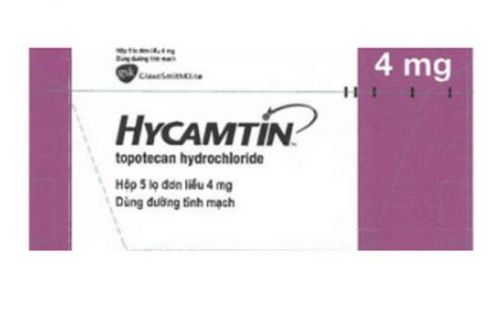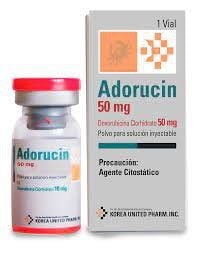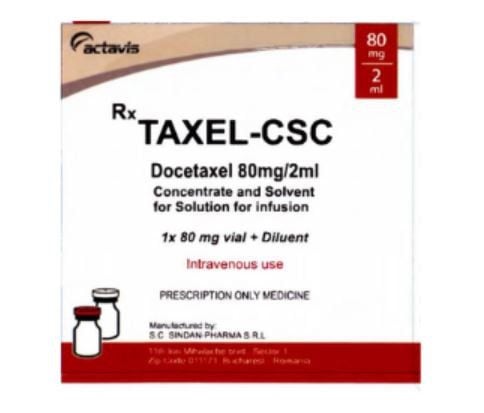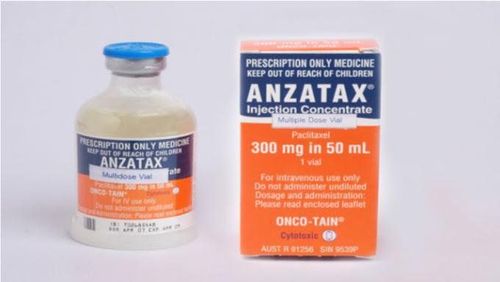This is an automatically translated article.
Assogem is a chemotherapy drug that is used alone or in combination with other drugs to treat certain types of cancer, including breast, lung, ovarian, and pancreatic cancers. To use the drug correctly, it is always important and necessary to learn the relevant information.1. What is the effect of Assogem?
Assogem medicine contains the main ingredient Gemcitabine (as Gemcitabine HC1) 200mg. This active ingredient has the effect of inhibiting DNA synthesis, slowing or stopping the growth of cancer cells.
2. Indications and contraindications of Assogem
2.1. Indications for use of Assogem Assogem is indicated for use in the following cases:
In combination with carboplatin for the treatment of advanced carcinoma of the ovary in patients who have relapsed after at least 6 months of platinum-containing drug therapy. month. In combination with paclitaxel for the initial treatment of metastatic breast cancer after failure of combination regimens with anthracycline. Use of Assogem in the treatment of advanced or terminal or metastatic carcinoma in situ. It is usually used as a first- or second-line treatment in patients previously treated with fluorouracil. Use in combination with cisplatin in the initial treatment of non-small cell lung cancer when the disease is inoperable, the cancer is locally advanced, or has reached the metastatic stage. Treatment of patients with bladder cancer. 2.2. Contraindications to use Assogem Do not use Assogem for patients with a history of allergy to Gemcitabine, pregnant or lactating women.
3. Dosage and how to use Assogem
3.1. Dosage of Assogem When using Assogem for adults, you can refer to the dosage as follows:
* Use Assogem for patients with non-small cell lung cancer:
Single dose : Use the drug in high doses. 1000mg/m2/time/week for 3 weeks then rest for 1 week (4-week cycle). In some cases it may be necessary to adjust the dose of the cycle or give a cycle as needed. Combined dose: Use the drug at a dose of 1000mg/m2/time on days 1, 8, 15 of a 28-day cycle. In addition, patients can also apply the regimen 1250mg/m2/day on days 1 and 8 of the 21-day cycle. In some cases it may be necessary to adjust the dose of the cycle or give a cycle as needed. Combined with Cisplatin dose from 75-100mg/m2, used once every 3 weeks. * Patients with pancreatic cancer:
Use the drug at a dose of 1000mg/m2/time/week for 7 consecutive weeks, then take a break for 1 week. Continue using Assogem in a 4-week cycle, once a week for 3 consecutive weeks and then 1 week off. In some cases it may be necessary to adjust the dose of the cycle or give a cycle as needed. * Use Assogem for patients with bladder cancer:
Use the drug at a dose of 1000mg/m2; infusion on days 1, 8, 15 in a 28-day cycle, combined with Cisplatin for the best effect. Use Cisplatin at a dose of 70 mg/m2 on day 1 or day 2 of each 28-day cycle. It is recommended that cisplatin be administered after Gemcitabine has been infused and do not forget to repeat the cycle. Insert the drug into the bladder with a dosage of 2000mg (before use, it is necessary to mix the drug in 100 ml of physiological saline). Note that the drug should be kept in the bladder for 1 hour and maintained twice a week for 3 weeks. Then pay attention to repeat the drug after 4 weeks and use at least 2 such cycles. * Patients with breast cancer (used in combination therapy with Paclitaxel):
First, the patient should receive Paclitaxel (175mg/m2) on day 1 for 3 hours; followed by intravenous infusion of Assogem (1250 mg/m2) over 30 minutes on days 1 and 8 of a 21-day cycle. In some cases it may be necessary to adjust the dose of the cycle or give a cycle as needed. In addition, it should be noted that before starting therapy, patients need to have a granulocyte count > 1500/mm3. Patients with ovarian cancer (used in combination therapy with Carboplatin). Use Assogem at a dose of 1000mg/m2 on days 1 and 8 of a 21-day cycle. Note the use of Carboplatin infusion on day 1, after the Assogem infusion has been completed. Assogem may have to be adjusted for the following dose in a cycle or for a cycle if deemed necessary. * Use Assogem for patients with cholangiocarcinoma:
Use Assogem at a dose of 1000mg/m2 (30 minutes infusion) on days 1 and 8 of each 21-day cycle; used in combination with Cisplatin (25mg/m2, infused over 1 hour on days 1 and 8 before Assogem). Continue treatment for a period of 24 weeks (8 cycles) in case of disease progression or toxicity. 3.2. How to use Assogem Assogem has the following ways:
Mix Assogem with 0.9% sodium chloride solution to achieve a drug concentration in the solution of 38mg/ml (ensure the maximum concentration of 40mg/ml). For the vial containing 200 mg of powder, 5 ml of 0.9% sodium chloride solution must be added to obtain a subsequent total volume of 5.26 ml. For 1000mg vials, 25ml of 0.9% sodium chloride will need to be added to ensure total volume, then 26.3ml for 1000mg vials. When mixing the drug, it is necessary to shake vigorously to dissolve the drug completely and then continue to dilute it with 0.9% sodium chloride to reach a concentration of 0.1mg/ml. The drug preparation process takes place in a closed room, with pressure checked and the operator uses full protective equipment (blouse, gloves, mask, glasses) when mixing. Absolutely do not use when the drug is precipitated to change color. With leftover medicine and vials, needles, syringes, ... must be disposed of according to the correct procedure. Assogem is only used once a week, each time infusion for 30 minutes or up to 60 minutes. In case of use for 5 consecutive days but patient intolerance manifests as hypotension, the dose should be adjusted to 10 mg/m2/day. If Assogem is used twice a week, the maximum tolerated dose is 65 mg/m2 when infused over 30 minutes and increases to 150 mg/m2 when injected over 5 minutes. In this regimen, some problems may be encountered including thrombocytopenia, weakness, flu-like symptoms. If the drug is extravasated, the patient should be stopped immediately and transferred to another intravenous infusion.
4. Assogem side effects
During the use of Assogem, some common side effects include:
Peripheral edema, pain, fever, drowsiness, red or itchy skin rash, hair loss, nausea/vomiting, constipation, diarrhea . Stomatitis, leukopenia, thrombocytopenia, anemia, hemorrhage. Increased transaminases or possibly increased alkaline phosphatase, increased bilirubin, hematuria, increased blood urea nitrogen, proteinuria,. Shortness of breath, irregular breathing, infection, dysesthesia, increased creatinine, bronchospasm. Assogem can also cause some rare side effects such as:
Acute respiratory distress syndrome, anaphylaxis, anorexia, arrhythmia. Tissue inflammation, congestive heart failure, cerebrovascular accident, cough, muscle tremors, sweating, necrosis, increased GGT, headache. Hemolytic uremic syndrome, hypertension, insomnia, interstitial pneumonia, liver failure or appearance of hepatotoxic reactions, fatigue. Myocardial infarction, subcutaneous hemorrhage, pulmonary edema, peripheral vasculitis, renal failure, respiratory failure, rhinitis, sepsis. Some other rare side effects of Assogem include:
Thrombocytosis, reversible encephalopathy syndrome, capillary leakage, microvascular thrombosis, anaphylactic reactions,. Pulmonary edema, respiratory distress syndrome and ischemic colitis, skin vesicles, toxic epidermal necrolysis.
5. Be careful when using Assogem
Need to reduce the dose when using the drug for the elderly, women due to the longer half-life of the drug.
People with kidney failure, liver failure, history of hepatitis, liver metastases, cirrhosis, alcohol abuse can make the old disease worse. Complete blood count and platelet count should be monitored before each administration of Assogem. Determination of liver function and kidney function before and after taking Assogem. When Assogem is combined with cisplatin therapy, electrolytes including potassium, magnesium, and calcium should be monitored. Currently, Assogem is used in the treatment regimen of some cancer diseases. Therefore, patients should adhere to the treatment regimen prescribed by the doctor to achieve the best results.













